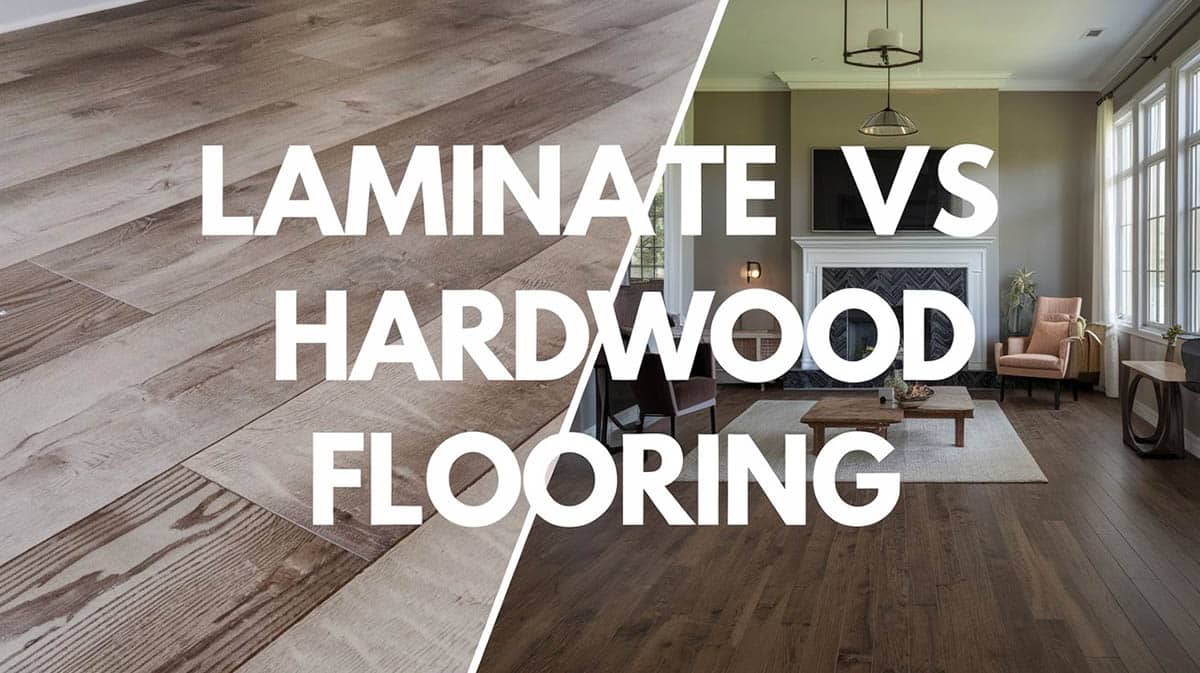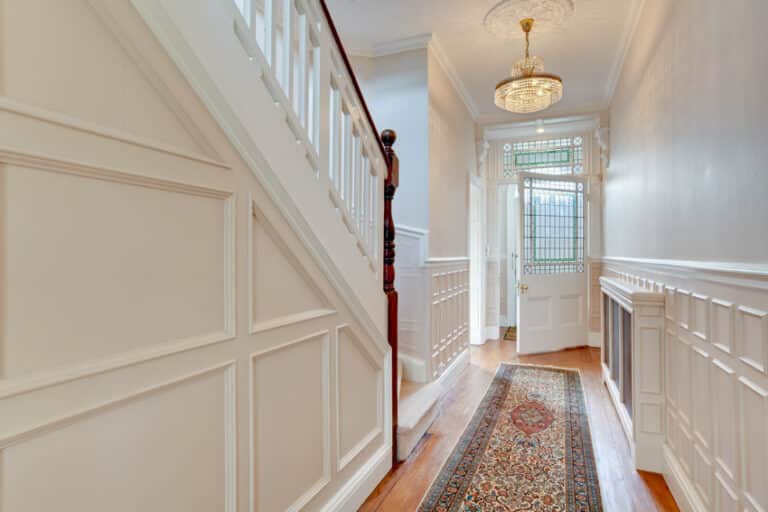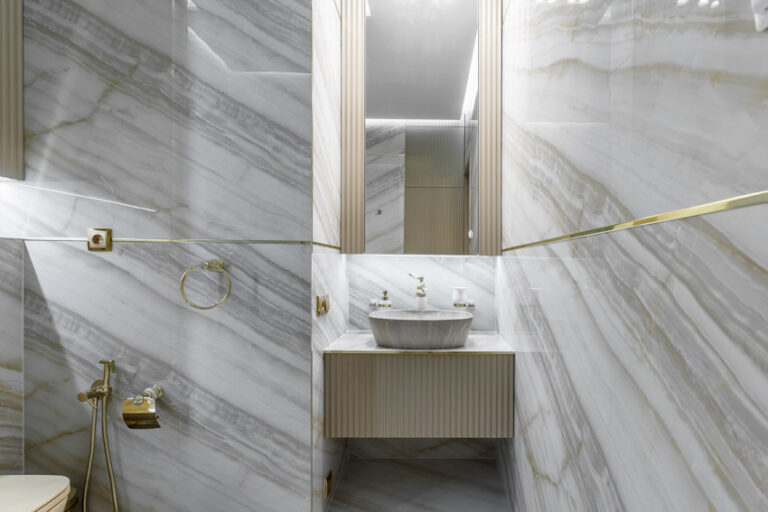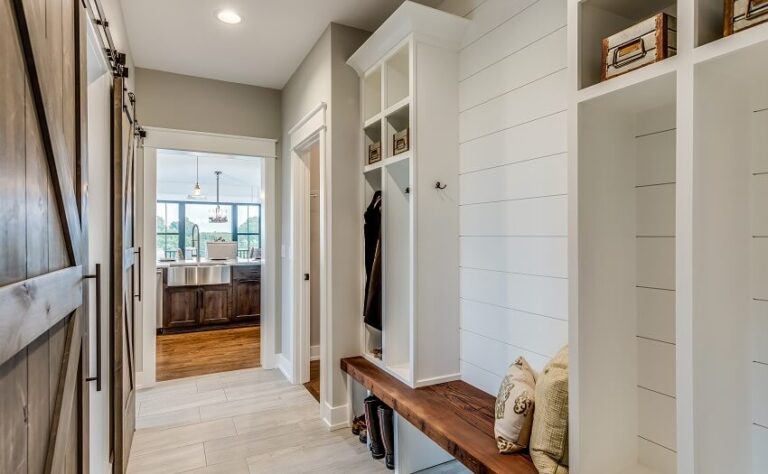Laminate vs Hardwood Flooring: Pros and Cons & Which Is Best for You?

These days homeowners are left with more than one choice when it comes to design solutions regarding floor options. Two of the most popular choices today are laminate and hardwood. Each has unique advantages and disadvantages which we will cover below. Laminate is suitable for modern homes for a lower cost than many other types, including hardwood. Nowadays, it can expertly imitate many of the most sought-after wood species available. It is durable and able to resist an abundance of scratches and nicks and comes in planks or tiles depending on your preference. On the other hand, there’s no denying that hardwood flooring is beautiful. It can provide the perfect atmosphere through its rich, dense tone of natural wood. Available in planks, strips, and parquet design, hardwood is sought after by home buyers and enjoyed for its long life when properly maintained.
What is Laminate?
Laminate flooring consists of four layers namely the wear layer, design layer, inner core, and backing. Each layer is assigned to serve a certain task such as the wear layer protecting the floor from scratches and fading. Whereas the design layer mimics the image of a high-resolution graphical imagery of a wooden texture. The inner core is a dense fiberboard that provides acoustical absorption, moisture resistance, and stability. The backing layer makes sure the floor is contained with extra resistance to moisture and other hazards. Armstrong, Mohawk and Pergo are considered the top brands.
Pros and Cons Of Laminate Flooring
Pros
Installation – The installation process is a matter of putting the boards together on the floor and snapping them over each other, which is a very DIY task. There is no requirement for special tools or glues of sorts or professional skills.
Cost – It is seemingly less costly than hardwood in every other way. For instance, the price of hardwood may depend on the choice of exotic trees, or the manufacturing process could be complex to begin with. Unlike in laminate floors where synthetic layers are merged and topped with a laminated layer, the process is far less costly and simpler than any other hardwood.
The cost can vary depending on the quality of the grain, texture, and stability. Overall on average, a square foot would cost $3.00 on-wards. A parquet type offers a decidedly French look to this room’s design and can have higher installation costs. Parquet floors are often used for smaller enclosed spaces such as bedrooms and hallways.
Durability – The average lifespan of this material is calculated up to 10 years if properly taken care of. External elements such as UV, exposure to water or other hazards may lessen the lifespan and will distort, eventually.
Moisture Resistance – The material is made out of pressed wood, being the reason it owns characteristics of scratch resistance, durability and resistance of moisture. It can be performed well even in semi moist areas such as in kitchens or pantries.
Pets – It can serve exceptionally well at houses with pets. The wear layer is specifically designed to resist scratches from pets. The floor that can be installed in households with pets are wider in range over the rating of Abrasion Class 3. Sticking to these specs will not only serve you with a floor best for pets, but in return your pet will have to most comfortable floor board to move about.
Maintenance – It is generally a very easy going material that can be kept very well if you know what is right to do. For an example, it is highly advisable to purchase laminate cleaner in regards with vacuuming the floor board. It is not advisable to use a damp mop, to sweep or to dress the floor with different kinds of waxes/ abrasives that can risk the lifespan of the floor
Cons
Replacement – The major drawback is that the floorboards can’t be repaired in terms of refinishing or sanding. Though you can opt for the replacement of individual floorboards, the new floor would have a considerable mismatch with the existing flooring because of wearing due to age. Thus, it is advisable to replace the whole floor.
Not biodegradable – Wear layer of the floor can contain materials that are not biodegradable. Some types may even use formaldehyde or other hazardous chemicals that has the ability to release toxic elements such VOC.
Synthetic – Although the material shares many attributes similar to an organic hardwood, it can be extremely hard and unnatural. Supposedly, this floor type quite lacks the organic warmth.
What is Hardwood?
Hardwood flooring is extracted from solid timber. Solid hardwood flooring is a popular option for the purists and perfectionists who do not want to settle for less. It is a long term investment with a good pricing that adds up to the re sale value. With an endless amount of textures and variations of types in the market, consumers are only gaining the better. Bruce and Hearne Hardwoods are considered the top brands lately.
One of the first considerations to make is whether to buy engineered hardwood floors or solid types. The former often look exactly like a solid piece of wood, but instead of being thick are made of a thinner veneer with other layers beneath. Solid hardwood on the other hand is a complete piece of solid wood from top to bottom. You can read more about the types of hardwood floors here.
Pros and Cons of Hardwood Flooring
This living room features Brazilian cherry wood floors. While exotic looking, the prices for cherry woods from South America have become much more affordable over the past several years. Visit this page for more living rooms with hardwood floors.
Pros
Organic Attributes – Hardwood is a natural material that is of 100% wood which varies in unique textures and colors. The rich density that this option offers are in no way comparable to other synthetic materials.
Appearance – It carries the most elegant outlook and a very rich tone to the whole house. Even the lesser exotic versions have a more elegant outlook than many of the premium selections of floors
Re-sale Value – Usually, well maintained floors inherita a premium resale value other than many other types out in the market, but, the lesser exotic ones may have a lower resale value, even than some of the premium selections of laminated floors. The resale value highly depends on the type of wood, usage and the well maintenance.
Impact Resistance – It is one of the excellent choice when it comes to the scale of hardness; solid tropical types can be well tolerated given in any condition. The impact resistance could vary depending on the type.
Maintenance – Although it tends to be somewhat of a vulnerable material, it is retouchable. Maintenance-wise, it can be sanded or refinished eventually. This will be of high benefit over other types, to last a long time.
For daily maintenance, you can opt to sweep the floor on a regular basis including the treatments of a no wax wood cleaner and a floor restorer that is well suited for the type of floor finish. There are smart tips on maintaining the floor on a day to day basis, when met with sudden blunders on a daily basis.
Cons
Price – Basically, this flooring is extracted from natural resources that are exotic trees. The main disadvantage this flooring carries is the variation of the price that might depend on the value of the tree, per se. Usually, options such as maple, oak varies in price from $3-$5 per square foot whereas the prices may vary depending on the width of the plank or how exotic the tree is. You can read more about the cost of wood flooring here.
Installation – The installation requires professional knowledge, special equipment and practice and by no means can you consider it a DIY task like laminate Flooring.
Durability – Even though it has the ability to last lifelong, this material is generally considered as quite a vulnerable material, prone to scratches and damages. And could easily wear or distort when exposed to UV, or other vulnerable conditions and by no means fights against moisture.
Moisture Resistance – Solid Hardwood Flooring is not the best choice to be installed in moist conditions. It is advisable not to install solid hardwood flooring in environments that are often exposed to water since hardwood flooring tends to warp or discolor, by the time. Although the conditions are such that hardwood flooring is adaptable to be installed in kitchens we cannot forget the maintenance that it requires then.






